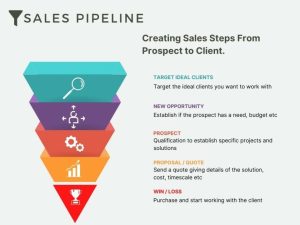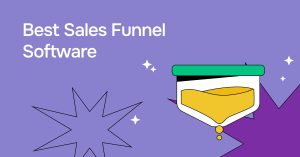Existing customer? Sign in
Unlock Growth with Top SaaS Insights & Tips

Did you know that the SaaS industry is projected to reach a whopping $908.21 billion by 2030? The software-as-a-service (SaaS) model has revolutionized cloud computing, offering businesses of all sizes an affordable and flexible solution for their software needs. Whether you’re a startup or an established enterprise, leveraging SaaS can unlock significant levels of growth and propel your business forward.
In this article, we will delve into key insights and actionable tips for harnessing the power of SaaS to drive productivity, expand revenue, and achieve long-term success. From understanding the evolving SaaS industry to optimizing key metrics and implementing lean strategies, we will equip you with the knowledge and strategies needed to thrive in the competitive SaaS landscape.
Key Takeaways:
- SaaS industry projected to reach $908.21 billion by 2030.
- SaaS offers affordable and flexible software solutions for businesses.
- Understanding the evolving SaaS industry is crucial for success.
- Optimizing key metrics can drive growth and customer retention.
- Implementing lean strategies and expanding revenue are essential for SaaS businesses.
The Evolving SaaS Industry: Statistics and Trends
The SaaS industry is a rapidly growing market that is estimated to be worth approximately $197 billion in 2023. With around 30,000 SaaS companies in operation, this industry shows no signs of slowing down.
The United States leads the global SaaS market share, with about 17,000 SaaS companies. This dominance can be attributed to the country’s robust technology infrastructure and entrepreneurial ecosystem.
In today’s digital landscape, SaaS adoption has become widespread across organizations of all sizes. On average, an organization utilizes 110 SaaS applications to enhance their operations and productivity.
Small businesses, in particular, have recognized the benefits of SaaS solutions and have embraced them with open arms. Nearly 78% of small businesses have invested in SaaS applications to streamline their processes, reduce costs, and increase efficiency.
Horizontal SaaS Companies Taking the Lead
Within the SaaS industry, there are two main types of companies: horizontal and vertical. Horizontal SaaS companies cater to broad markets, providing solutions that can be applicable to various industries and business functions. On the other hand, vertical SaaS companies focus on specific industries or niches.
It has been observed that horizontal SaaS companies tend to experience faster growth compared to their vertical counterparts. This is due to their ability to target a wider customer base and address a range of needs across different industries.
Overall, the SaaS market is expected to continue its significant growth trajectory, reaching a value of $908.21 billion by 2030. This exponential growth can be attributed to the increasing demand for cloud-based software solutions and the benefits they offer in terms of scalability, flexibility, and cost-effectiveness.
As the SaaS market continues to evolve, businesses must stay informed about the latest trends and statistics to capitalize on the opportunities presented by this thriving industry. In the following sections, we will explore how SaaS solutions can be leveraged to increase productivity, regional trends in SaaS adoption, key metrics for SaaS business growth, and strategies to accelerate growth in the SaaS industry.
Leveraging SaaS Solutions for Increased Productivity
SaaS solutions have gained widespread adoption across industries, company sizes, and business goals. Their impact on productivity and operational efficiency cannot be overstated. In fact, the average organization now uses 110 SaaS applications, highlighting the growing reliance on these cloud-based software solutions.
According to industry predictions, by the end of 2023, 99% of companies are expected to be utilizing at least one SaaS solution. This rapid adoption is driven by the numerous benefits SaaS applications offer, such as scalability, cost-effectiveness, and seamless updates.
Small businesses, in particular, have embraced SaaS wholeheartedly. A staggering 78% of small businesses have invested in SaaS solutions, understanding their potential to level the playing field and drive growth. Leveraging SaaS-powered workplaces can be a game-changer, as these environments utilize an average of 212 SaaS applications to streamline processes and promote collaboration.
Let’s compare the average number of SaaS applications used in different types of workplaces:
| Workplace Type | Average Number of SaaS Applications Used |
|---|---|
| SaaS-Powered Workplaces | 212 |
| Transitioning Workplaces | 79 |
| Traditional Workplaces | 39 |
The table above clearly demonstrates the extent to which SaaS-powered workplaces harness the power of SaaS applications to enhance productivity and drive efficiency.
The adoption and integration of SaaS applications across businesses of all sizes and industries are indisputable indicators of the growing recognition and relevance of SaaS solutions. As businesses strive for digital transformation and seek streamlined workflows, SaaS applications provide the necessary tools and resources to achieve those goals.
SaaS Market Trends Across Different Regions
While the SaaS industry is concentrated in the United States, with the highest number of SaaS companies, there are emerging local SaaS markets in countries like the United Kingdom, Canada, India, China, and Japan. Africa and the Middle East are also experiencing a surge in SaaS use.
North America currently holds the highest revenue share in the SaaS market, followed by Europe and Latin America. Regional SaaS markets are expected to grow at different rates. For example, Europe’s SaaS market is estimated to reach $60.36 billion by 2025.
The growth potential in these regions presents significant opportunities for SaaS businesses to expand their presence and tap into new markets.
Key Highlights:
- Emerging local SaaS markets in countries like the United Kingdom, Canada, India, China, and Japan
- Surge in SaaS use in Africa and the Middle East
- North America holds the highest revenue share in the SaaS market
- Europe’s SaaS market is expected to reach $60.36 billion by 2025
- Opportunities for SaaS businesses to expand and tap into new markets
| Region | Revenue Share |
|---|---|
| North America | Highest |
| Europe | Significant |
| Latin America | Promising |
With the rising adoption of SaaS solutions across various regions, it is crucial for SaaS businesses to understand and adapt to the unique dynamics of each market. By strategizing and aligning their offerings with regional preferences and demands, SaaS companies can position themselves for success in the evolving global SaaS landscape.
Key Metrics for SaaS Business Growth
Monitoring key metrics is crucial for driving growth in SaaS businesses. By tracking and optimizing these metrics, companies can make data-driven decisions that lead to increased customer acquisition, retention, and overall success. Let’s explore the key metrics that every SaaS business should prioritize:
- Customer Acquisition Cost (CAC)The Customer Acquisition Cost (CAC) measures the amount of money a company spends to acquire a new customer. It includes all marketing and sales expenses incurred during the customer acquisition process. By understanding CAC, SaaS businesses can optimize their marketing strategies and allocate resources effectively.
- Customer Lifetime Value (CLTV)Customer Lifetime Value (CLTV) represents the total revenue generated by a customer over their entire lifetime. By calculating CLTV, SaaS businesses can identify their most valuable customers and allocate resources accordingly. It also helps in determining the profitability of different customer segments.
- Churn RateChurn rate measures the percentage of customers who cancel their subscription within a given time period. Lower churn rates indicate higher customer retention and satisfaction. By closely monitoring churn rate, SaaS businesses can identify areas for improvement and implement strategies to reduce churn.
- Monthly Recurring Revenue (MRR)Monthly Recurring Revenue (MRR) reflects the predictable and recurring revenue generated on a monthly basis. It is a key metric for measuring the financial health and growth of a SaaS business. By consistently tracking MRR, companies can assess their revenue streams, identify trends, and make informed decisions.
- Net Promoter Score (NPS)Net Promoter Score (NPS) is a metric that gauges customer satisfaction and loyalty. It is based on the likelihood that customers would recommend a company to others. By regularly collecting NPS data, SaaS businesses can assess customer sentiment, identify areas of improvement, and enhance overall customer experience.
“By tracking and optimizing these key metrics, SaaS businesses can make informed decisions, drive customer acquisition and retention, and unlock new growth opportunities.”
Understanding and leveraging these key metrics is essential for driving growth and success in the SaaS industry. By closely monitoring customer acquisition cost, customer lifetime value, churn rate, monthly recurring revenue, and net promoter score, companies can gain valuable insights, make data-driven decisions, and propel their business towards sustainable growth.
Sample Table: Comparison of SaaS Metrics
| Metric | Definition | Importance |
|---|---|---|
| Customer Acquisition Cost (CAC) | The cost of acquiring a new customer | Helps in optimizing marketing strategies and resource allocation |
| Customer Lifetime Value (CLTV) | Total revenue generated by a customer over their entire lifetime | Identifies most valuable customers and guides resource allocation |
| Churn Rate | Percentage of customers who cancel their subscription | Measures customer retention and highlights areas for improvement |
| Monthly Recurring Revenue (MRR) | Recurring revenue generated on a monthly basis | Indicates financial health and growth of the business |
| Net Promoter Score (NPS) | Metric that gauges customer satisfaction and loyalty | Assesses customer sentiment and enhances overall customer experience |
The table above provides a comprehensive comparison of key SaaS metrics, emphasizing their definitions and importance. It serves as a useful reference for SaaS businesses aiming to track and optimize these metrics to drive growth and success.
Accelerating Growth with Lean and Monetized Strategies
To accelerate growth, SaaS businesses can focus on driving productivity with a lean team by optimizing their billing infrastructure. By streamlining processes and resource allocation, companies can enhance efficiency and maximize output. This lean approach allows businesses to achieve more with fewer resources, ultimately boosting productivity and improving the bottom line.
In addition to lean team productivity, monetizing AI products presents another growth strategy for SaaS businesses. With advancements in artificial intelligence technology, companies can capitalize on their AI-powered solutions by offering them as valuable standalone products. This not only diversifies revenue streams but also positions businesses as innovators in the industry.
Furthermore, expanding revenue through existing customers is a key area of focus for SaaS businesses. By implementing cross-sell or add-on features strategies, companies can leverage their existing customer base to generate additional revenue. This approach not only increases customer lifetime value but also strengthens customer relationships, leading to higher retention rates and long-term growth.
Moreover, international expansion through localization is a crucial growth avenue for SaaS companies. As the global market for SaaS solutions continues to thrive, adapting products and services to meet the specific needs and preferences of international markets is vital. By localizing software interfaces, content, and customer support, businesses can reach a broader customer base and establish a strong global presence.
Implementing these strategies allows SaaS businesses to capitalize on their inherent strengths and unlock their full growth potential. By driving lean team productivity, monetizing AI products, expanding revenue through existing customers, and pursuing international expansion through localization, companies can navigate the competitive landscape and accelerate growth in the dynamic SaaS industry.
The Power of Lean Team Productivity
“By optimizing the billing infrastructure and streamlining processes, SaaS businesses can unlock higher levels of productivity with leaner teams.”
Monetizing AI Products: A Path to Growth
“SaaS companies can leverage their AI-powered solutions by monetizing them as standalone products, driving revenue diversity and industry leadership.”
Expanding Revenue Through Existing Customers
“By implementing cross-sell or add-on strategies, SaaS businesses can tap into existing customer base to generate additional revenue and foster long-term relationships.”
International Expansion through Localization
“Through localization efforts, SaaS companies can expand their global footprint, reach diverse markets, and capture new revenue streams.”
Conclusion
In the highly competitive SaaS industry, achieving sustainable growth and success requires a strategic approach. By leveraging key metrics and adopting growth strategies, SaaS businesses can unlock immense opportunities for growth. Understanding and optimizing metrics such as Customer Acquisition Cost (CAC), Customer Lifetime Value (CLTV), churn rate, Monthly Recurring Revenue (MRR), and Net Promoter Score (NPS) is essential for making informed decisions and driving customer acquisition and retention.
Furthermore, focusing on lean and monetized strategies can help SaaS businesses maximize their productivity and revenue streams. Optimizing billing infrastructure, monetizing AI products, and expanding revenue through existing customers can significantly impact growth. Additionally, international expansion through localization opens up new markets and customer bases.
With these insights and tips, SaaS businesses can unlock the power of SaaS growth strategies and drive success. By staying agile, monitoring key metrics, and implementing effective growth strategies, businesses can thrive in the dynamic SaaS landscape and achieve sustainable growth in their journey to success.
FAQ
What is SaaS?
SaaS stands for Software-as-a-Service. It is a software delivery model where software is provided over the internet on a subscription basis. Instead of purchasing and installing software on individual devices, users can access it through a web browser, making it more flexible and cost-effective.
How does SaaS differ from traditional software?
SaaS is cloud-based software that is hosted and maintained by the provider, whereas traditional software needs to be installed and managed locally on each user’s device. With SaaS, updates and maintenance are handled by the provider, saving time and resources for the user.
What are the benefits of using SaaS?
SaaS offers numerous benefits, including cost-effectiveness, scalability, accessibility, and automatic updates. It allows businesses to streamline their operations, improve collaboration, and access software from anywhere, anytime, as long as they have an internet connection.
How can SaaS solutions enhance productivity in the workplace?
SaaS solutions simplify and automate processes, allowing employees to focus on more strategic tasks. They enable better collaboration, real-time data access, and remote work capabilities, leading to increased efficiency and productivity across teams.
Which industries can benefit from SaaS solutions?
SaaS solutions are versatile and can be utilized in various industries, including finance, healthcare, e-commerce, marketing, and more. Any business that relies on software applications can potentially benefit from adopting SaaS solutions.
What are the key metrics for measuring SaaS business growth?
Key metrics for measuring SaaS business growth include Customer Acquisition Cost (CAC), Customer Lifetime Value (CLTV), churn rate, Monthly Recurring Revenue (MRR), and Net Promoter Score (NPS). These metrics help businesses track customer acquisition, retention, revenue generation, and customer satisfaction.
How can SaaS businesses drive growth with lean and monetized strategies?
SaaS businesses can drive growth by optimizing their billing infrastructure to increase productivity with a lean team. Monetizing AI products is another strategy that can unlock new revenue streams. Additionally, implementing cross-selling or add-on features and expanding internationally through localization can contribute to business growth.
What are the emerging SaaS markets globally?
While the SaaS industry is concentrated in the United States, emerging SaaS markets can be found in countries such as the United Kingdom, Canada, India, China, and Japan. Africa and the Middle East are also experiencing a surge in SaaS adoption.
How can SaaS businesses expand and tap into new markets?
SaaS businesses can expand and tap into new markets by localizing their products to cater to different regions and languages. This involves adapting the software, marketing materials, and customer support to specific local requirements, increasing the chances of success in new markets.
What are some growth strategies for SaaS businesses?
Some growth strategies for SaaS businesses include focusing on lean team productivity, optimizing billing infrastructure, monetizing AI products, expanding revenue through existing customers with cross-selling or add-on features, and pursuing international expansion through localization.
Source Links
- https://www.paddle.com/blog/accelerating-saas-growth-on-a-lean-team
- https://www.linkedin.com/pulse/unlocking-growth-5-key-metrics-your-saas-business-anna-stafford-bpvcc?trk=article-ssr-frontend-pulse_more-articles_related-content-card
- https://www.notta.ai/en/blog/saas-statistics




